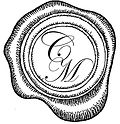
History

During the war of 1812 the sea battles demonstrated a need for a naval repair yard in the vicinity of Boston. It was then that President James Madison ordered Captain George Talcott to find a suitable location for a new arsenal. Talcott examined a number of sites but chose Watertown due to its secure position inland from Boston and because of the shipping advantages afforded by the Charles River. With the site chosen, the United States immediately purchased 40 acres of land for the new arsenal at the east end of the Town of Watertown. In 1816, the Watertown Arsenal officially began operation.
As the Commanding officer of the arsenal, Captain Talcott was also in charge of supervising the early building program. The plan of the Arsenal was modeled after that of the Arsenal at Gibbonsville, NY, which was built in 1813 and was later known at the Watervliet Arsenal. The plan consisted of 10 brick buildings arranged around a yard or parade ground in what is actually a double quadrangle. Alexander Parris, responsible for Quincy Market, Rope Walk at Charlestown Navy Yard and the Women's City Club, was noted for his architecture of the Watertown Arsenal.
To the romantics of the 19th century, Watertown Arsenal was a true delight of the area, with its picturesque view of the Charles, it's venerable cannon recalling exciting conflict and its handsomely uniformed officers parading about the grounds. Even the magazine Gleason's Pictorial Drawing Room Companion described the Watertown Arsenal as "the finest government establishment in our vicinity" with "many delightful views about the grounds."
During the 19th century, the Watertown Arsenal established a national reputation for its work in the development of cast iron guns. Its game in the field of metallurgy was particularly enhanced by Major Thomas J. Rodman, who served as commanding officer at the Arsenal between 1859 and 1865. Rodman was a brilliant officer who is best remembered for his development of the "Rodman Casting Process," which improved the metal structure and increased the life of the cannon 11-20 times.
Shortly after the Civil War, accusations were brought before the congressional Committee on the conduct of the War that Major Rodman had mismanaged the Arsenal and that he was disloyal to the Union. Among the many charges levied against Rodman was the accusation that the new quarters (the Commander's Mansion) being constructed for himself were excessively extravagant for a commanding officer. Opponents of the residence estimated that the costs would be as high as $100,000 to $150,000. The actual cost was much less- $63,478.65- which provided fine craftsmanship and materials to make one of the most handsome structures in the area. This would be equivalent to just under $1 million today.
The Bracketed Style (or Italianate) mansion exhibits intricate details- from paneled brick work to a Victorian veranda supported by the Corinthian cast iron columns. An outstanding feature of the interior is the abundant use of the fine woods (chestnut, butternut, black walnut, cedar and spruce) such as in the beautiful poly-chromatic floors in the main portion of the house.
The Commanding officer's Quarters known as Quarters 111 was placed on the National Register of Historic places in 1976. The Junior League of Boston took the Commander's Mansion under its wing in 1999 and made it their annual Designer Show House. The Mansion started hosting private events in 2005. Tammy McKenna took over the management of the Mansion in 2006 and has been managing it ever since, growing the business year over year.

